Brown-headed Nuthatch
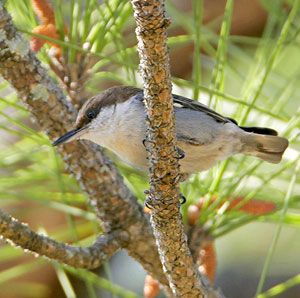
© Greg Lavaty
Sitta pusilla
Family: (Sittidae) Nuthatches
Preferred Habitat: Pine forests.
Seasonal Occurrence: Uncommon throughout the year.
IUCN Conservation Status: Least Concern
Notes by Susan Billetdeaux: The Brown-headed Nuthatch is resident in southeastern pine forests. East Texas is on the western edge of its range. It is more often heard than seen as it prefers to forage high in the tree tops. It is seldom found within Houston's city limits, partly because of the difficulty in spotting it. The best way to find one is to learn to identify the song, a squeaky ki-dee. Unlike other nuthatches Brown-headed Nuthatches are more likely seen among branches and pinecones than on tree trunks. Males and females look alike. Kleb Woods Nature Preserve in Tomball is one of the best locations to look for them, and sometimes one can be found in Bear Creek Park in west Houston.
Profile by Aidan Healey: Often found clinging to tree trunks and branches, the Brown-headed Nuthatch is equally at home climbing upward and downward among the high branches of pine forests. Their rather unique habit of walking down tree trunks headfirst may appear silly, but it comes in handy when they are foraging for insects in the deep crevices of pine bark or gathering seeds from within pine cones.
The Brown-headed Nuthatch appears large-billed, short-legged, and short-tailed, especially for a bird that’s only 4½ inches long. It has a dark bluish-gray back and is white below, with a brown cap on the top of its head. Flocks of Brown-headed Nuthatches are most often heard before they are seen, their repetitive squeaky calls sounding like rubber ducks high in the treetops. Though Brown-headed Nuthatches are usually seen in small groups throughout the year, they occasionally join mixed-species flocks with chickadees and woodpeckers during the winter months.
During the breeding season, Brown-headed Nuthatch pairs will excavate a hole in a tree in which to build their nest. These nest holes are usually between 5 and 15 feet above the ground, but they will also make use of birdhouses and existing holes from old woodpecker nests when available. Though the female will typically remain on the nest to incubate their eggs and rely on the male to bring her food, some nesting pairs are known have an additional "helper" male that also brings food to the female and young in the nest.
Profile by Grace Yaros: Brown-headed Nuthatches are tiny nuthatches native to pine forests of the southeastern United States. Their range extends from southern Maryland and Delaware through southern Florida, extending westward into eastern Texas. They are blue-gray above and whiteish below with dark brown caps. Like other nuthatches, they have a tendency to climb head first down tree trunks. During the summer they primarily eat insects and spiders, shifting their diet to pine seeds during the winter. Brown-headed Nuthatches are rather unique amongst songbirds in that they are known to occasionally use tools – individuals will use pieces of bark held in their bills to flake off other pieces of bark in search of insects or spiders hiding underneath.
These are social and chatty birds, and their squeaky, high-pitched calls sound remarkably like a toy rubber duck! Breeding pairs will often have “helpers” that assist with territory defense and bringing food to the female while she’s incubating the eggs. These helpers are generally young male birds and tend to be the primary breeding pair’s offspring from the previous breeding season.
Because of their reliance on pine forests and standing dead trees, unsustainable logging practices and fire suppression both negatively impact the amount and quality of habitat available to Brown-headed Nuthatches. They thrive best in mature pine forests, with occasional fires that create an open understory and standing dead trees for them to nest in. Brown-headed Nuthatches can be found at various locations in and around Houston, including Sam Houston National Forest, Alexander Deussen Park, and Mitchell Nature Preserve.
-
Cornell Lab of Ornithology
-
Bird Guide
-
Bird Library
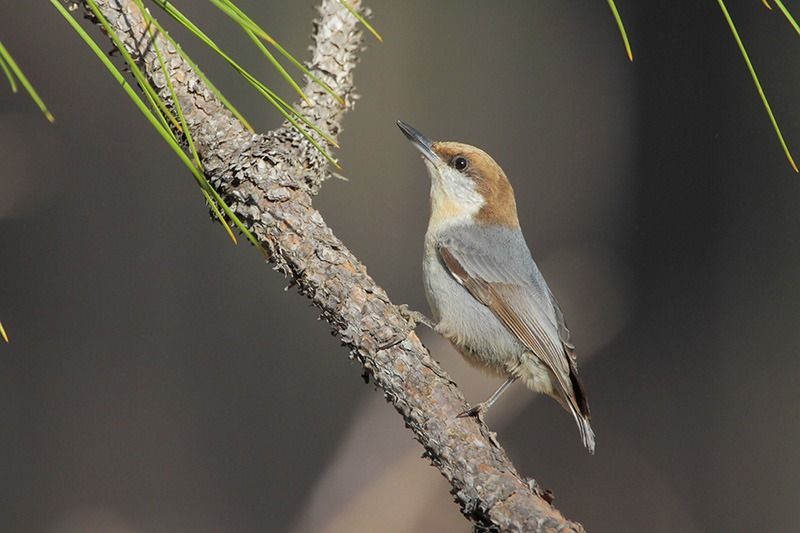
© Greg Lavaty, www.texastargetbirds.com
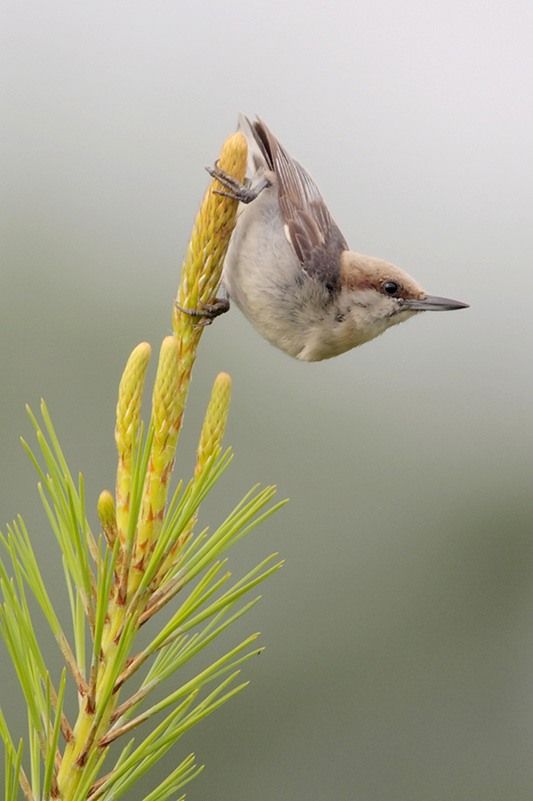
© Greg Lavaty, www.texastargetbirds.com
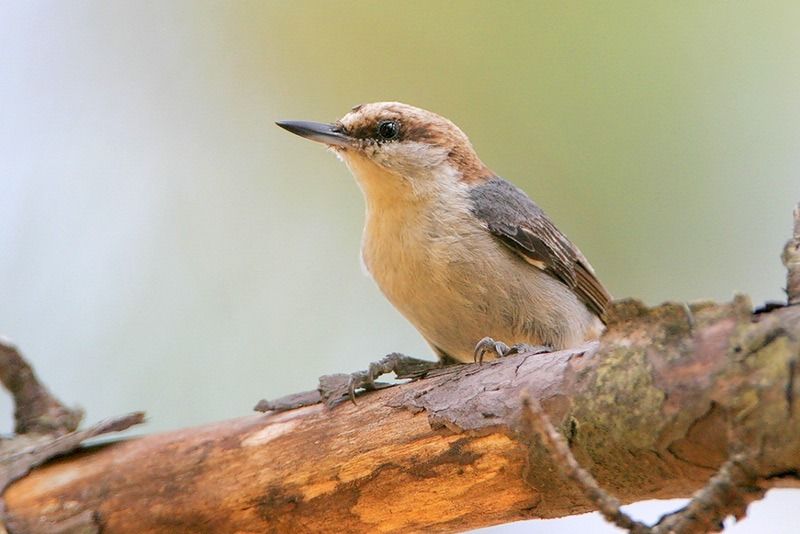
© Greg Lavaty, www.texastargetbirds.com
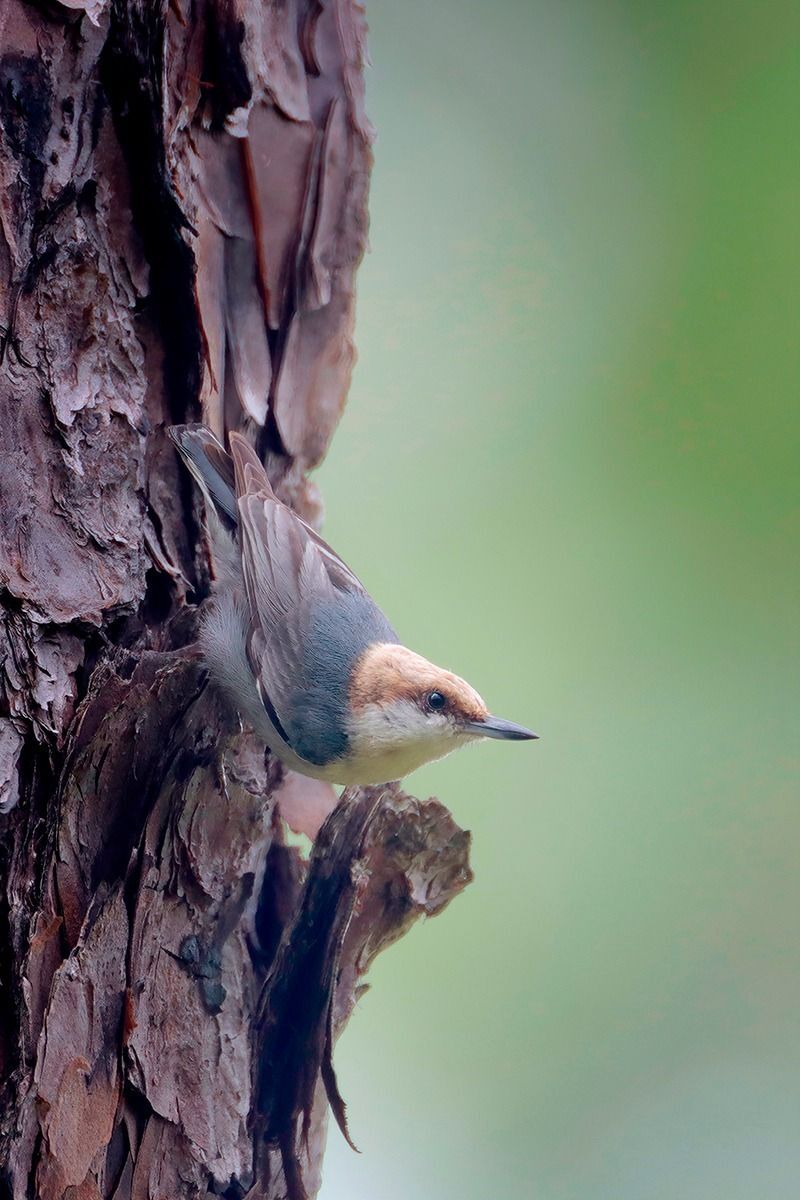
© Greg Lavaty, www.texastargetbirds.com




















